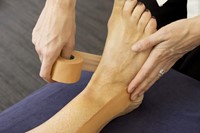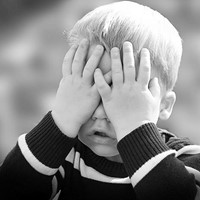

If you have been involved in sport or the occasional boogey on a Saturday night, the chances are that you’ve probably sprained your ankle at some stage in your life.
Read more

If you have been involved in sport or the occasional boogey on a Saturday night, the chances are that you’ve probably sprained your ankle at some stage in your life.
Read more
There are too many outdated concepts and beliefs about the management and treatment of ankle sprains.
 Outcomes-based research has challenged previous management of ankle sprains resulting in an updated approach. Here are the top 3 misconceptions followed by the updated facts! Read more
Outcomes-based research has challenged previous management of ankle sprains resulting in an updated approach. Here are the top 3 misconceptions followed by the updated facts! Read more
Heel pain is often caused by plantar fasciitis – an inflammation of the large tissue band (plantar fascia) connecting the heel bone to the toes.
The pain is usually felt under the heel and symptoms can vary from sharp, dull, ache, burning sensation and sometimes mild swelling. Read more

Ankle injuries are very common on the sporting field but can easily happen in everyday life such as tripping over a rock in the garden or even just walking on an uneven surface.
Ankle injuries are commonly associated with swelling, pain, bruising and decreased movement but how do you know what you have injured? Read more

It is far too easy to simply stop all exercise when injured. This does not mean we want you to hop on a sprained ankle, but there are things you can do while recovering.
 Unfortunately, if you completely stop exercise the body is quite unforgiving. If you don’t get moving, the science is quite clear:
Unfortunately, if you completely stop exercise the body is quite unforgiving. If you don’t get moving, the science is quite clear: